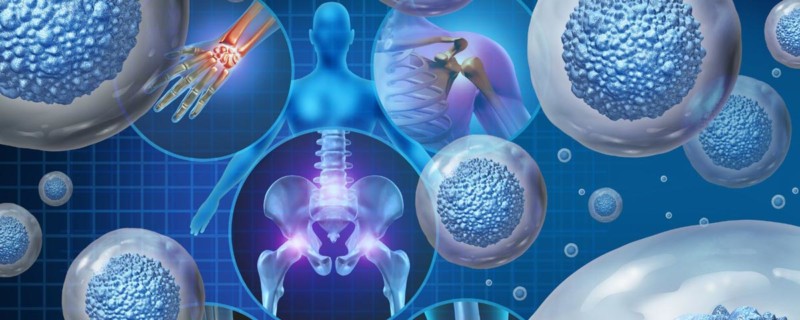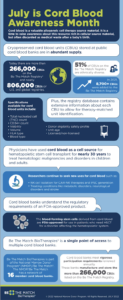
The potential of cord blood is endless – Cell therapy developers need to tap into it
Many people look at umbilical cord blood as medical waste after a baby’s birth. I see it as a stem cell source with endless potential for changing—and saving—lives. And for cell and gene therapy developers, it is a cellular source material they should not shy away from using.
I have seen firsthand the potential cord blood holds. I spent nearly 20 years as a physician scientist at the University of Minnesota treating pediatric patients who had leukemia. Many of these patients needed an allogeneic hematopoietic stem cell transplant (HSCT)—also known as a blood stem cell transplant—to treat their disease.
I used cord blood almost exclusively as the graft source for transplant unless a patient had an HLA-matched sibling. There are medical benefits to using cord—such as less graft-versus-host disease (GvHD) and less relapse—that made it my preferred graft source. Cord blood is also readily available and I could have the cord blood unit in my hands for patient infusion in two weeks.
This availability is a key benefit for cell and gene therapy developers. Cord blood units are cryopreserved and there is an abundant supply. Currently, more than 266,000 cord blood units are listed on the Be The Match Registry® and more than 806,000 are listed on US and international registries.
Naïve state of cord blood has benefits in cell therapy development
My work with leukemia patients also led me to cell therapy research. My lab used cord blood as a starting material to make young, naïve T-cells and innate lymphoid cell type 2. Our purpose for the T-cells was to mitigate relapse and prevent infections after transplant. With the innate lymphoid cell type 2 research, we aimed to treat acute GvHD.
Cord blood lends itself well to this type of research and therapy development because of its naïve state. Researchers are using umbilical cord blood to develop NK cells, NK-CAR and other types of T cells. Some are developing induced pluripotent stem (IPS) cells—which are in an even more naïve state—from cord blood. Those IPS cells can then be developed into the desired lineage and used to create an off-the-shelf allogeneic cell therapy product.
Some researchers are hesitant to use cord blood because of their inexperience with it in the lab. However, in my experience, there were many protocols already published to use as a starting point. In addition, cord blood stem cells can be readily expanded using expansion protocols that are easy to implement. And most importantly, cord blood cells are amenable to genetic modification and manipulation which is a major advantage in using cord blood as a stem cell source.
There is a regulatory advantage to cord blood
Cell and gene therapy developers who use cord blood as a starting material are using a product that has been through the FDA approval process. The FDA approved the blood forming stem cells derived from cord blood for use in patients who need unrelated HSCT for a disorder of the hematopoietic system.
While the indication will be different, this approval is advantageous to cell and gene therapy developers because of the experience cord blood banks have gained. Those that hold a license are experienced in manufacturing a GMP-grade product compliant with FDA requirements, and that manufacturing process has already been validated by the FDA.
In addition to the regulatory advantage, cord blood units are highly characterized. That means a cell and gene therapy developer will have a significant amount of information about a cord blood unit that’s been selected, such as total nucleated cell count, CD34+ count, HLA type, volume and viability. Developers will also have information about infectious disease testing performed on the mother at the time of donation
A wealth of knowledge exists to support cell therapy developers using cord blood
Cell and gene therapy developers also have the advantage of working with Be The Match BioTherapies, which is part of the National Marrow Donor Program/Be The Match where I now work. The team has deep knowledge in immunogenetics and bioinformatics that has been developed through decades of experience.
As cell and gene therapy developers are thinking about their product and how to put it into practice, they can tap into this expertise to help them determine the best cord blood units to meet their goals. For example, if a developer wants to create a gene therapy for sickle cell disease, the team can help them understand the common haplotypes for this demographic and help them select the cord blood units to use as the starting material. Moreover, there are research units available that are fully characterized (but not appropriate for in human use) that can be used for product development and optimization of protocols or test runs.
With the proven benefits of cord blood and the knowledge and resources available, cell and gene therapy developers should not hesitate exploring cord blood as a starting material. The potential is endless.
For more information, please visit Be The Match BioTherapies
To find out more about Cord Blood – Please download the Cord Blood Awareness Infographic
About the Author
 Heather Stefanski, MD, PhD, Vice President of Medical Services at the National Marrow Donor Program®/Be The Match®
Heather Stefanski, MD, PhD, Vice President of Medical Services at the National Marrow Donor Program®/Be The Match®
Heather Stefanski, MD, PhD, is the Vice President of Medical Services at the National Marrow Donor Program®/Be The Match®, including Be The Match BioTherapies. Prior to her arrival, Dr. Stefanski was an Associate Professor of Pediatrics at the University of Minnesota and was actively involved in clinical care and research involving children with life-threatening blood and immune system disorders. One of her areas of focus was the use of cord blood units in stem cell transplants and other cellular therapy. She is board certified in both Pediatrics and Pediatric Hematology-Oncology.
